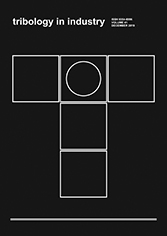Volume 43, No 3, 2021, Pages 452-464
Effect of Exothermic Addition (CuO - Al) on the Structure, Mechanical Properties and Abrasive Wear Resistance of the Deposited Metal During Self-Shielded Flux-Cored Arc Welding
Authors:
B. Trembach ![]()
![]() ,
A. Grin
,
A. Grin ![]() ,
V. Subbotina
,
V. Subbotina ![]() ,
V. Vynar
,
V. Vynar ![]() ,
S. Knyazev
,
S. Knyazev ![]() ,
V. Zakiev
,
V. Zakiev ![]() ,
I. Trembach
,
I. Trembach ![]() ,
O. Kabatskyi
,
O. Kabatskyi ![]()
DOI: 10.24874/ti.1104.05.21.07
Received: 2 May 2021
Revised: 12 June 2021
Accepted: 28 July 2021
Published: 15 September 2021
Abstract:
The microstructure evolution, mechanical properties, and tribological properties of deposited metal Fe-C-Cr-Ti-B alloy by self-shielded flux-cored wire electrode (FCAW S) with the introduction of exothermic addition and without it are investigated. Experimental studies showed that the introduction of CuO Al exothermic addition in the composition of the wire core filler reduced the grain size of the deposited metal. Furthermore, X-ray diffraction analyses show that the boride layer contained FeB, Fe2B, and Ti(C, N) phases. Depth-sensing indentation was used to determine hard phase properties (hardness, Young's modulus and plasticity coefficient). It was shown that introduction of CuO ľAl exothermic addition in the core filer increased the mechanical properties of deposited metal. The latter can be explained by the grain size decrease, as well as a change in the phase composition of the deposited metal due to additional copper alloying. This transformation is accompanied by an increase in hardness and in the Young's modulus. Tribological tests showed the effectiveness of introduction of the exothermic addition CuO ľAl into the filler core for increasing the wear resistance under conditions of 3-body abrasive particle wear.
Keywords:
Hardfacing, Flux-cored wire arc welding, Exothermic addition, Mechanical properties, Microstructure, Indentation test, Abrasive wear





